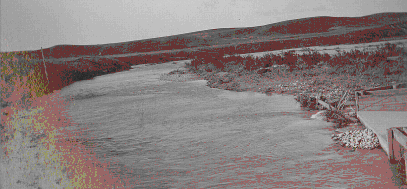
The construction of the St. Mary's canal aroused international animosity between Canada and the United States. In 1903, the United States Bureau of Reclamation decided to divert the headwaters of the St. Mary's river (which lay in American territory) into the Milk River. This diversion by the Americans would have rendered the irrigation project in southern Alberta useless. The Americans persisted with their plan until the Mormons retaliated. The Mormon plan was to divert the headwaters of the Milk River (which lay in Canadian territory) back into the St. Mary's irrigation system. This would have cut off the water supply to northeastern Montana. When the Mormons began construction of the new canal the Americans sued for negotiations. On July 11, 1909, Great Britain (representing Canada) and the United States signed the Boundary Waters Treaty which divided the flow of the St. Mary's and Milk Rivers equally between the two countries.

P19640357000-GM The waters of the St.-Mary's river which were nearly lost in the Boundary Waters Dispute with the United States.
Previous Page | Exhibit Contents | Home | Navigation Information | Glossary | Curriculum Guide | Next Page
Copyright © 1996 Sir Alexander Galt Museum. All rights reserved.